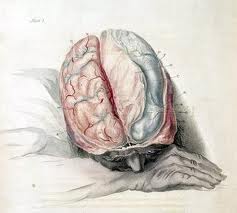US v. Hendrickson Sentencing the Addict’s Brain
Main Article Content
Abstract
If there was any doubt whether bioethics scholarship was impacting the legal system, District Judge Mark W. Bennett’s recent sentencing opinion in US v. Hendrickson (2014) removed it. Referencing society’s evolving view of addiction and disease, he noted that “advances in science continue to outpace advances in law” and that even though addiction is no longer regarded as a moral failing but rather an illness:
the law still responds to drug abusers with punitive force, rather than preventative or therapeutic treatment. It is therefore unsurprising that, since 1980, the number of federal prisoners serving drug-related sentences has skyrocketed.

Although the medical community recognizes that addiction affects a victim’s judgment and behavior, Judge Bennett wrote that, within the legal community, there is no consensus whether courts should treat it as a mitigating circumstance. Instead, some judges insist it is mitigating only when it falls outside convention. Rather than treat each individual’s illness according to their individual needs, the courts sympathize only with the most extreme instances. Yet, because this evolving view of disease rightly equates physical as well as mental illness, this is akin to saving one’s sympathy for only the sickest cancer patients.
Next, acknowledging that those who violate the law must still face consequences, Judge Bennett in his opinion outlined what a neuroscientifically-informed sentence would look like. Tasked with sentencing a twenty-three year old possessing stolen firearms, he did not overlook the defendant’s decade-long history of drug abuse and criminal history. In fact, he noted that the recommended sentencing guidelines suggest 37-46 months in prison.
Citing the Supreme Court’s opinion in Roper v. Simmons (2005) and several scholarly articles on addiction, brain development, and behavior, he concluded:
Just as there are fundamental differences between the juvenile and adult brain, so too are there fundamental differences between the addict and non-addict brain. Because of these differences, addicts, like juveniles, tend to make “impetuous and ill-considered” decisions. Thus, for the same reasons juveniles are generally less culpable, so too are addicts.
In other words, like a juvenile, the addict’s brain lacks the same capacity for decision-making that an otherwise “normal” brain may have. Like any other mental illness, it can skew one’s ability for long-term planning, cost-benefit analysis, and understanding of punishment. So, with this in mind, Judge Bennett sentenced the defendant to 31 months in prison, which is six months less than the recommended guidelines. Upon release, the defendant will be required to participate in three years of substance abuse treatment.
Although this sentence raises the question whether a different sentence – say, one with less prison time and more treatment – could be just as effective, it is a move in the right direction. It demonstrates that while it is a gradual process, the labors of medicine and neuroscience are being read not only by lawyers and legislators but also members of the court.

